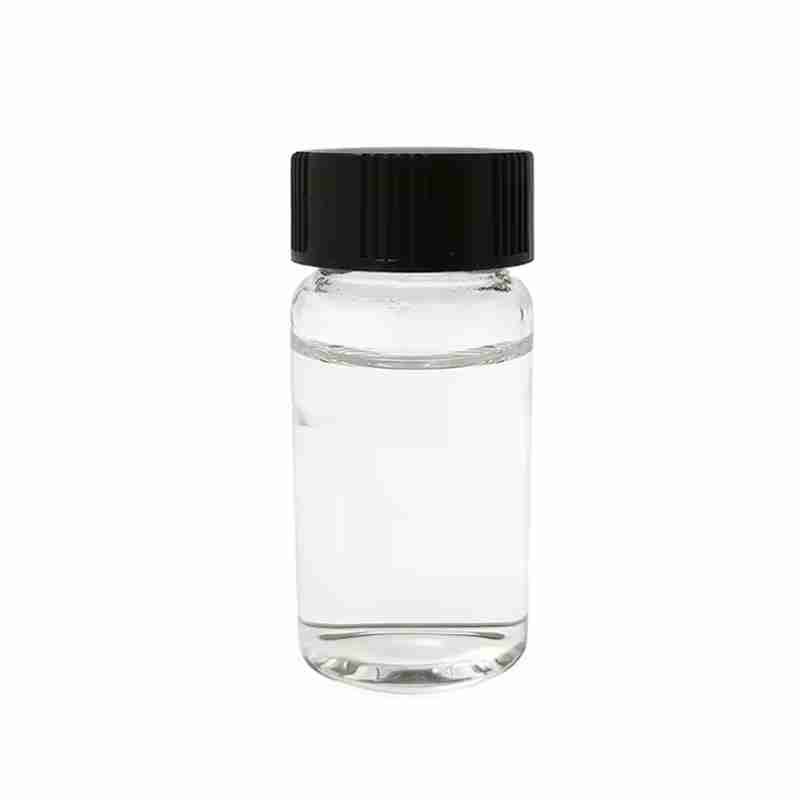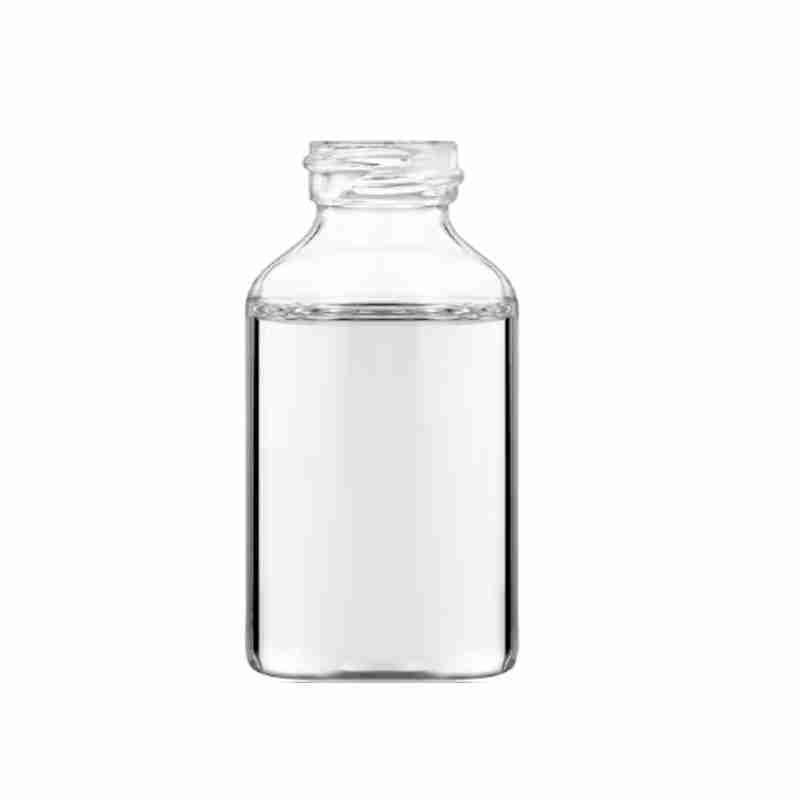Polyhexamethylene Biguanide Hydrochloride CAS #32289-58-0
Polyhexanide (Polyhexamethylene biguanide hydrochloride, PHMB) is a polymer used as a disinfectant and antiseptic. Spelled Polihexanide (inn) for dermatological purposes and sold under the names lavasept, serasept, prontosan and omniside.?PHMB has been shown to be resistant to Pseudomonas aeruginosa, Staphylococcus aureus, Escherichia coli, Yeast infection albicans, Aspergillus Brazil, Enterococcus as well as Klebsiella pneumoniae.
The average molecular weight of polyhexamethylene biguanide hydrochloride is 1100-1800, the molecular formula is (C8H17N5)n??xHCl, n=12-16. Polyhexamethylene biguanide hydrochloride (PHMB) is a broad-spectrum antibiotic that can kill gram-positive bacteria, gram-negative bacteria, fungi and yeast.
发送询盘
Polyhexamethylene Biguanide Hydrochloride CAS #32289-58-0
| Poly(hexamethylenebiguanide)hydrochloride Basic information |
| Description?Application?Safety |
| Product Name: | Poly(hexamethylenebiguanide)hydrochloride |
| Synonyms: | POLY(HEXAMETHYLENEBIGUANIDE) HCL;Polyhexamethylene biguanidine;Acticide SR 1296;Arlagard E;BG 1;BG-IR;Cosmocil;Lavasept |
| CAS: | 32289-58-0 |
| MF: | C10H23N5 |
| MW: | 213.32312 |
| EINECS: | 1308068-626-2 |
| Product Categories: | Antibacterial agent;CHEMICAL;Biocide;Fungicide series;Intermediates & Fine Chemicals;Pharmaceuticals;Polymers;Industrial/Fine Chemicals;Water treatment;Disinfectants;PHM;intermediate;32289-58-0 |
| Mol File: | 32289-58-0.mol |
 |
|
| Poly(hexamethylenebiguanide)hydrochloride Chemical Properties |
| storage temp. | Inert atmosphere,Room Temperature |
| solubility | Water |
| form | Solid |
| color | White to off-white |
| InChI | InChI=1S/C10H23N5/c1-9(11)14-7-5-3-4-6-8-15-10(12)13-2/h3-8H2,1-2H3,(H2,11,14)(H3,12,13,15) |
| InChIKey | SAGIGHPRUJPLKX-UHFFFAOYSA-N |
| SMILES | C(=N)(C)NCCCCCCNC(=N)NC |
| CAS DataBase Reference | 32289-58-0(CAS DataBase Reference) |
| EPA Substance Registry System | Poly(iminoimidocarbonyliminoimidocarbonyliminohexamethylene) hydrochloride (32289-58-0) |
| Safety Information |
| Hazardous Substances Data | 32289-58-0(Hazardous Substances Data) |
- 2
- 2-diallylpent-4-en-1-amine
- 4
- 95-16-9
- Ammonium sulfamate
- Benzothiazole
- cas:67889-00-3ح2
- cas:83524-75-8 | pigment black 32
- cas:928836-00-4 | 2
- cas:932745-70-5 | 4
- Chemical Minerals
- Coconut diethanolamide
- Daily Chemicals
- discount
- for sale
- General pvc resin
- hexyl D-glucoside
- in stock
- Lauramidopropyl betaine
- LAURIC ACID MONOETHANOLAMIDE
- Petroleum Additives
- Plasticiser
- Ploymers
- price
- PVC
- quotation
- Raw Materal
- Remove term: Petroleum Additives Petroleum Additive
- SODIUM ETHYL 2-SULFOLAURATE
Related Products
Chemical Name: STODDARD SOLVENT
CAS No.: 64742-88-7
Appearance: Colorless or Light Yellow Liquid
Benzothiazoles are a class of chemical compounds characterized by a fused benzene and thiazole ring. They exhibit a broad spectrum of applications, particularly as antioxidants in rubber and plastic industries, enhancing product longevity and performance. Additionally, benzothiazoles serve as key intermediates in the synthesis of pharmaceuticals, contributing to the development of life-saving drugs. Recognized for their stability and reactivity, these compounds are integral to advancing material science and healthcare solutions.
Butylated Hydroxytoluene (BHT) is a synthetic phenolic antioxidant commonly added to foods, cosmetics, and packaging to prevent the oxidation of fats and oils, thereby extending their shelf life. It is also used as a preservative in a variety of products, including rubber, petroleum products, and animal feed. BHT is recognized for its effectiveness in maintaining nutrient levels, color, flavor, and odor in food products . It is known to have a melting point of 69-71??C, a boiling point of 265??C, and is soluble in ethanol, acetone, and benzene, but not in water, glycerin, or propylene glycol . BHT is also used in some dietary supplements due to its antioxidant properties . However, it is important to handle BHT with care, as it can cause skin irritation and is considered harmful if swallowed .
Terpene resin is a type of natural resin derived from terpenes, which are organic compounds found in various plants. It is known for its aromatic properties and is commonly used in the production of fragrances, flavorings, and as a component in adhesives and coatings within the chemical industry. Terpene resin offers a range of benefits, including enhancing the solubility of essential oils and providing a stable base for various applications. Its natural origin makes it a preferred choice for eco-friendly products.
Chemical Name: UV-120
Other Name: (2’,4’-Di-tert-butylphenyl 3,5-di-tert-butyl-4-hydroxybenzoate)
CAS No.: 4221-80-1
Molecular Fomula: C29H42O3
Molecular weight: 438.66
Assay: ≥99%(LC)
Silicones are a family of synthetic polymers known for their versatility and stability. They are heat-resistant, non-toxic, and have excellent electrical insulation properties. Commonly used in various industries such as construction, automotive, aerospace, and personal care products, silicones offer a wide range of applications from sealants and adhesives to lubricants and medical devices. Their resistance to extreme temperatures and weathering makes them a preferred choice for many high-performance applications.
Chemical Name: Ashwagandha Extract
Synonyms: Withania somnifera, ext.; Withania Somnefera Extract
CAS: 90147-43-6
Appearance: Brown
Chemical Name: Dehydrocholic acid
Synonyms: Acide dehydrocholique; Triketocholanic acid
CAS No.: 81-23-2
Molecular Formula: C24H34O5
Molecular Weight: 402.53
Appearance: Powder
Chemical Name: Choline salicylate
CAS No.: 2016-36-6
Molecular Formula: C12H19NO4
Molecular Weight: 241.28
Appearance: Red-Brown Crystal
Polyhexamethylene guanidine hydrochloride, often abbreviated as PHMG-HCl, is a high molecular weight polymeric biguanide compound known for its potent antimicrobial properties. With a chemical structure that features a long chain of methylene groups bridged by guanidine units, PHMG-HCl is effective against a broad spectrum of microorganisms, including bacteria, viruses, and fungi.
This hydrochloride salt form of PHMG is highly soluble in water and is commonly used in various applications due to its non-irritant and non-toxic nature to human skin and mucous membranes. It is widely recognized for its ability to form a colorless and odorless solution, making it an ideal choice for use in personal care products, medical disinfectants, and water treatment processes.
The versatility of PHMG-HCl lies in its cationic nature, which allows it to bind to negatively charged microbial cell walls, disrupting their integrity and leading to cell death. This mechanism of action contributes to its effectiveness as a preservative and disinfectant. Moreover, its substantivity, or the ability to adhere to surfaces, enhances its long-lasting antimicrobial activity.
In summary, Polyhexamethylene guanidine hydrochloride is a reliable and efficient antimicrobial agent, pivotal in industries where hygiene and cleanliness are paramount, offering a safe and sustainable solution for microbial control.
Chemical Name: Arabic gum
CAS No.: 9000-01-5
Appearance: powder
Chemical Name: 1,1,2,2-Tetrachloroethane
Other Name: Tetrachlorethane
CAS No.: 79-34-5
Molecular Formula: C2H2Cl4
Molecular Weight: 167.85
Appearance: Liquid


















